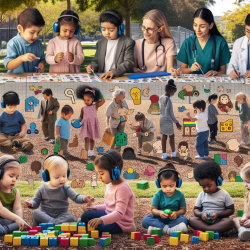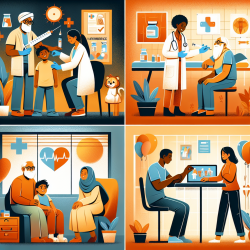Introduction
The "Rehabilitation Medicine Summit: Building Research Capacity" report presents a comprehensive framework to enhance research capacity in the field of rehabilitation medicine. This framework is crucial for practitioners, especially those involved in online therapy services like TinyEYE, to improve their skills and outcomes for children. By focusing on data-driven decisions and leveraging the recommendations from the summit, practitioners can significantly impact clinical practice.
Key Elements of Research Capacity
The summit identified five critical elements essential for building research capacity:
- Researchers: Training, mentoring, recruitment, and retention are vital. The report emphasizes the importance of a strong commitment to inquiry and collaboration among researchers.
- Research Culture, Environment, and Infrastructure: The need for a supportive research culture and robust infrastructure is highlighted. This includes creating core facilities and fostering interdisciplinary collaborations.
- Funding: Adequate funding is necessary to support research initiatives. Advocacy for policy changes and effective grantsmanship are recommended to secure resources.
- Partnerships: Collaborations with other disciplines and consumer groups are essential. These partnerships help in selecting relevant research topics and ensuring meaningful participation.
- Metrics: Establishing metrics to assess research capacity is crucial. This includes evaluating the quality and quantity of researchers and the impact of their work.
Implementing Research Capacity in Practice
Practitioners can enhance their skills by implementing the following strategies based on the summit's recommendations:
- Engage in Continuous Training: Participate in training programs and workshops to stay updated with the latest research methodologies and clinical practices.
- Foster a Collaborative Environment: Encourage interdisciplinary collaborations within your organization to leverage diverse expertise and perspectives.
- Advocate for Funding: Actively seek funding opportunities and advocate for increased support for rehabilitation research within your institution and professional networks.
- Build Partnerships: Establish partnerships with other organizations, academic institutions, and consumer groups to enhance research relevance and impact.
- Utilize Metrics for Improvement: Regularly assess your research activities using established metrics to identify areas for improvement and celebrate successes.
Encouraging Further Research
For practitioners interested in advancing their research skills, the summit's report serves as a valuable resource. By exploring the detailed recommendations and action plans, practitioners can identify opportunities for further research and development in rehabilitation medicine.
To read the original research paper, please follow this link: Rehabilitation medicine summit: building research capacity Executive Summary.










